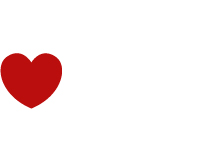The Bell System logo redesign, by the late design legend Saul Bass, impacted 135,000 Bell System vehicles, 22,000 buildings, 1,250,000 phone booths, and 170,000,000 telephone directories.
Here’s a 1969 newspaper clipping about the project.

This half-hour film was made by Bass’ company as a presentation to AT&T executives.
A quote from toward the end.
“In the new look, each impression contributes to the whole. Each signal, one piece of a mosaic, operated as a national visual communications system. It will introduce into every town in this country a new Bell look of excellence.
“The new look, for many, will be their assurance that they should join us, stay with us, invest in us, and that we believe in, and act by, our commitment to an ever-improving service.
“Gentlemen, Bell is alive, and living in the mainstream of today, with a look that says we will be the communications leader of tomorrow, just as we lead today.”
A fascinating insight into the Bell System logo and how Saul Bass pitched his work to clients.
Related, from the archives, is the cost of a Saul Bass logo, and a look at another classic mark, Minolta.





Comments
This logo reminds me of that video called, make that logo bigger. I am not sure why the type has to be so big.
Thank you for sharing this article. I find Saul Bass’ work extremely important in our day and age. He reinvented the wheel when it came to logos, making them easier to identify with their iconic look.
I think the type being so prominent is due to the age and popularity of the company at the time, it takes a lot of time in the public consciousness to be able to minimize and eventually do without text on a logo.
Thank you for this refreshing post. :) It is nothing but positive vibes to start the week and remind me of the importance of what I do as a graphic designer.
What’s interesting is that the word “logo” doesn’t appear once in the article.
Instead we have “image” “symbol” “look”.
To put this article in a historical context, the Woodstock Festival happened four days later.
Did you go? That was in your heyday, right? ;)
David, I can’t remember if I went to Woodstock. All kidding aside, I had a design internship that summer.
I was a member of the Saul Bass team that created the AT&T globe in 1982/83. One day I had the good fortune to find a set of the original Bell System manuals that were being tossed out.
In the Bell System Corporate Identification Program booklet they refer to the bell symbol, the logotype and the trademark (the combination of the symbol and logotype).
The use of the bell symbol with AT&T was not widely seen. Most people in the U.S. saw the bell symbol with the Bell System companies, such as Mountain Bell, Cincinnati Bell, New Jersey Bell, etc. The bell symbol with AT&T does appear at the back of the booklet.
Often I have heard brand identity specialists refer to the power of having a symbol that can depict the name – Apple, Target, Shell.
Consider that Bell not only had the name and logo in alignment but Alexander Graham Bell was the inventor of the telephone and the bell was the device that made the ringing sound. The name and symbol were also ubiquitous in American homes and phone booths. I can’t think of a single other company that had so much rationale for a name.
During our design exploration in 1982 we looked at hundreds of ways to update the bell. This initial work was done with the assumption that American Bell was going to be the new name. It was determined that the so called Baby Bells could use the Bell name after the break up but AT&T was not permitted to use the bell name or a bell logo. This lead to other explorations resulting in the AT&T globe.
Wow, fantastic to hear from somebody with so much experience, thank you!
Brilliant addition, Jerry. Thanks for sharing your experience.
This is a refreshing take on logo design today. The simple and effective icon design used here is inspiring and encourages me to focus more on simplicity in my own work.
I like how they stuck to their brand guidelines, although there is the obvious temptation to over-modernise the logo.
In a couple of short minutes, Steven Colbert provides a history of how we got got from AT&T to at&t, enjoy.
http://cdn.phonenews.com/images/2007/1/colbert-report-roasts-att-cingular.mp4
As an employee of Bell Telephone Lab in 1969, I find it interesting that no one contributing here has mentioned what the revised logo actually depicts — the inner shape is the image of a “state-of-art” 1960’s transister.
Simple lines, bold colors, that iconic bell – pure design genius. Timeless and instantly recognizable.